Peugeot 208 VS Dacia Sandero – Specs, Efficiency & Price Comparison
Which model is the better choice – the Peugeot 208 or the Dacia Sandero? We compare performance (156 HP vs 110 HP), boot capacity (352 L vs 328 L), efficiency (14.10 kWh4.50 L vs 5.30 L), and of course, the price (20200 £ vs 10700 £).
Find out now which car fits your needs better!
The Peugeot 208 (Hatchback) is powered by a Petrol, Electric or Petrol MHEV engine and comes with a Manuel or Automatic transmission. In comparison, the Dacia Sandero (Hatchback) features a Petrol or LPG engine and a Manuel or Automatic gearbox.
When it comes to boot capacity, the Peugeot 208 offers 352 L, while the Dacia Sandero provides 328 L – depending on what matters most to you. If you’re looking for more power, you’ll need to decide whether the 156 HP of the Peugeot 208 or the 110 HP of the Dacia Sandero suits your needs better.
There are also differences in efficiency: 14.10 kWh4.50 L vs 5.30 L. In terms of price, the Peugeot 208 starts at 20200 £, while the Dacia Sandero is available from 10700 £.
Compare all the key specs now and find out which model fits your lifestyle best!
In the realm of affordable hatchbacks, the Dacia Sandero and Peugeot 208 offer compelling choices for budget-conscious drivers. The Dacia Sandero stands out with its impressive value for money, providing a no-frills approach with spacious interiors and a practical driving experience. On the other hand, the Peugeot 208 enchants with its stylish design and advanced tech features, making it a captivating option for those who crave a blend of economy and modernity.
Peugeot 208
The Peugeot 208 exudes a distinctive French charm, combining sleek lines with an assertive stance on the road. Inside, it offers a modern and sophisticated cabin, complete with intuitive technology and high-quality finishes to enhance the driving experience. Its agile handling and efficient performance make it a delightful choice for both city commuting and longer journeys.
details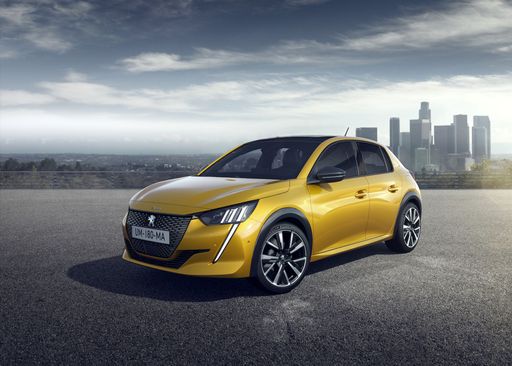 @ www.media.stellantis.com
@ www.media.stellantis.com
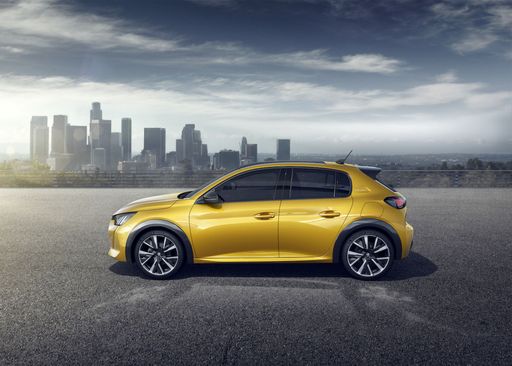 @ www.media.stellantis.com
@ www.media.stellantis.com
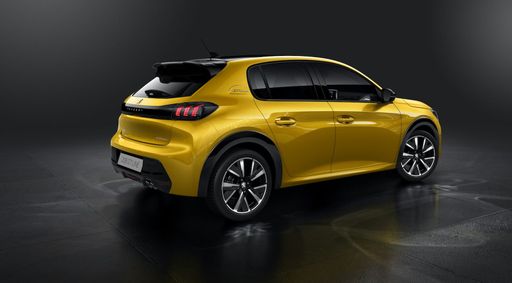 @ www.media.stellantis.com
@ www.media.stellantis.com
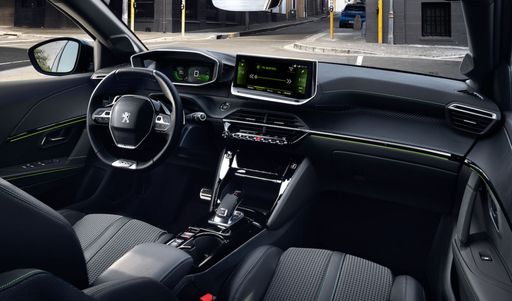 @ www.media.stellantis.com
@ www.media.stellantis.com
Dacia Sandero
The Dacia Sandero stands out as an exceptional value in the hatchback market, offering a blend of practicality and affordability that appeals to a wide range of drivers. Its understated design is complemented by a surprisingly spacious interior, providing ample comfort and functionality for everyday use. With impressive fuel efficiency and a solid reputation for reliability, the Sandero remains a popular choice for those seeking a no-nonsense vehicle without sacrificing essential modern features.
details @ dacia.at
@ dacia.at
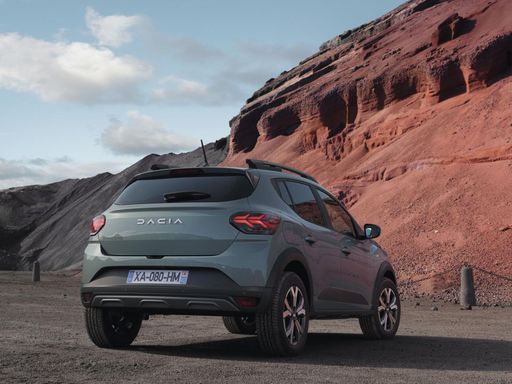 @ dacia.at
@ dacia.at
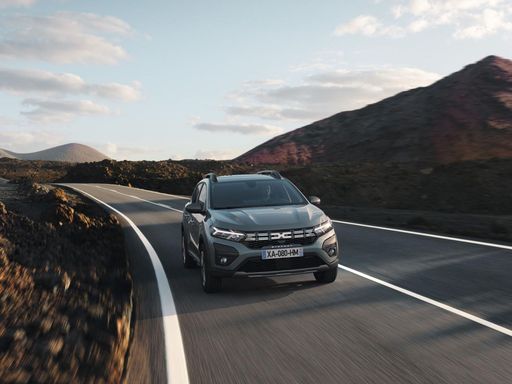 @ dacia.at
@ dacia.at
Compact Contenders: Dacia Sandero vs Peugeot 208
In the bustling arena of hatchbacks, the Dacia Sandero and the Peugeot 208 stand out as prominent competitors. Both vehicles offer a mix of modern engineering, efficiency, and practicality tailored for urban living. In this comparison, we will delve into the nuances that separate these two and help potential buyers make an informed choice.
Powertrain and Performance
The Dacia Sandero offers a range of petrol and LPG engines with outputs ranging from 67 HP to 110 HP. It features both manual and CVT transmissions, with the most potent configuration accelerating from 0 to 100 km/h in a respectable 10 seconds. The Sandero operates with a three-cylinder engine, designed for efficiency with a fuel consumption range starting from 5.2 L/100km. The maximum speed varies between 158 km/h and 183 km/h across different engine trims.
In contrast, the Peugeot 208 provides a mix of petrol, mild-hybrid, and even fully electric powertrains. It delivers higher performance with power outputs from 101 HP up to 156 HP. The most powerful petrol variant achieves 0 to 100 km/h in just 8.3 seconds. Additionally, the electric edition of the 208 promotes an impressive efficiency, using merely 14.5 kWh/100 km and can cover distances up to 410 km on a single charge.
Design and Dimensions
When considering size, the Sandero is a tad longer, measuring around 4099 mm, while the 208 is more compact at 4055 mm. The Sandero features a wider stance at 1848 mm, providing a roomier interior ambiance, while the 208 appeals with its sleek, aerodynamic design tailored for urban sophistication at a width of 1745 mm.
Both vehicles share the practicality of being five-door hatchbacks, allowing easy access to the cabin for all passengers, with seating capacity for five. The trunk capacity is another key difference; Sandero offers more cargo space with its 328-liter trunk, compared to the Peugeot 208's range between 265 to 309 liters depending on the variant.
Tech and Innovation
The Dacia Sandero boasts essential tech features with a focus on maintaining an attractive price point. It is equipped with a straightforward infotainment system and essential driver aids to make day-to-day driving manageable and convenient.
Peugeot, on the other hand, endows the 208 with more high-end technology. The i-Cockpit digital interface offers a futuristic and connected driving experience, featuring a 3D instrument cluster alongside advanced connectivity options. The electric 208 further includes innovative regenerative braking technology helping to maximize range efficiency.
Eco-Friendliness
In terms of emissions, the Sandero provides options across emission classes C to E, striving for environmentally conscious operations without compromising on performance. The 208, notably with its electric version, achieves class-leading status with a net-zero CO2 emission profile, highlighting Peugeot's commitment to sustainability.
Conclusion
Choosing between the Dacia Sandero and the Peugeot 208 largely depends on one's priorities and budget. The Dacia Sandero serves as an affordable yet competent option for those looking for dependable performance and practicality. Meanwhile, the Peugeot 208 addresses the needs of a tech-savvy and eco-conscious clientele, offering cutting-edge innovations and the choice of an electric model. Both vehicles exhibit the excellence of modern hatchbacks, combining efficiency, style, and utility that cater to urban mobility with distinct approaches.

|

|
|
|
|
Costs and Consumption |
|
|---|---|
|
Price
20200 - 35100 £
|
Price
10700 - 16700 £
|
|
Consumption L/100km
4.5 - 5.2 L
|
Consumption L/100km
5.3 - 7.1 L
|
|
Consumption kWh/100km
14.1 - 15.4 kWh
|
Consumption kWh/100km
-
|
|
Electric Range
362 - 432 km
|
Electric Range
-
|
|
Battery Capacity
46 - 51 kWh
|
Battery Capacity
-
|
|
co2
0 - 117 g/km
|
co2
105 - 140 g/km
|
|
Fuel tank capacity
44 L
|
Fuel tank capacity
32 - 50 L
|
Dimensions and Body |
|
|---|---|
|
Body Type
Hatchback
|
Body Type
Hatchback
|
|
Seats
5
|
Seats
5
|
|
Doors
5
|
Doors
5
|
|
Curb weight
1165 - 1530 kg
|
Curb weight
1089 - 1209 kg
|
|
Trunk capacity
309 - 352 L
|
Trunk capacity
328 L
|
|
Length
4055 mm
|
Length
4088 - 4099 mm
|
|
Width
1745 mm
|
Width
1848 mm
|
|
Height
1430 mm
|
Height
1499 - 1535 mm
|
|
Payload
380 - 430 kg
|
Payload
404 - 436 kg
|
Engine and Performance |
|
|---|---|
|
Engine Type
Petrol, Electric, Petrol MHEV
|
Engine Type
Petrol, LPG
|
|
Transmission
Manuel, Automatic
|
Transmission
Manuel, Automatic
|
|
Transmission Detail
Schaltgetriebe, Automat. Schaltgetriebe (Doppelkupplung)
|
Transmission Detail
Schaltgetriebe
|
|
Drive Type
Front-Wheel Drive
|
Drive Type
Front-Wheel Drive
|
|
Power HP
101 - 156 HP
|
Power HP
67 - 110 HP
|
|
Acceleration 0-100km/h
8.3 - 10.9 s
|
Acceleration 0-100km/h
10 - 16.7 s
|
|
Max Speed
150 - 200 km/h
|
Max Speed
158 - 183 km/h
|
|
Torque
205 - 270 Nm
|
Torque
95 - 200 Nm
|
|
Number of Cylinders
3
|
Number of Cylinders
3
|
|
Power kW
74 - 115 kW
|
Power kW
49 - 81 kW
|
|
Engine capacity
1199 cm3
|
Engine capacity
999 cm3
|
General |
|
|---|---|
|
Model Year
2023 - 2025
|
Model Year
2024 - 2025
|
|
CO2 Efficiency Class
D, A, C
|
CO2 Efficiency Class
D, C, E
|
|
Brand
Peugeot
|
Brand
Dacia
|
Peugeot 208
A Glimpse into the Future: The New Peugeot 208
The Peugeot 208, with its sleek design and innovative features, continues to set benchmarks in the automotive industry. As a hatchback, it seamlessly blends style with practicality, offering the perfect solution for urban driving and long-distance travels alike. In this article, we delve into the technical details and innovations that distinguish the latest iterations of the Peugeot 208.
Engine Options: Efficiency Meets Performance
The Peugeot 208 provides an array of engine options catering to different driving preferences. Featuring both petrol Mild-Hybrid technology and full electric powertrains, it offers a versatile range designed to accommodate eco-conscious drivers as well as those who prioritise performance.
With power outputs ranging from 101 PS to 156 PS, and a torque span of 205 Nm to 270 Nm, these machines are meticulously engineered to provide thrilling yet efficient drives. The petrol versions utilise a three-cylinder 1199 cm³ engine, optimising fuel consumption between 4.7 and 5.4 L/100km, while the electric e-208 models boast an impressive range of up to 410 km on a single charge.
Advanced Transmission Systems
The Peugeot 208 models come equipped with an advanced automatic transmission system, employing either a dual-clutch automatic gearbox or a manual transmission, depending on the chosen variant. These systems guarantee smooth gear transitions, thus enhancing driving pleasure and overall efficiency.
Performance and Environmental Considerations
From a performance standpoint, the Peugeot 208 impresses with its ability to accelerate from 0 to 100 km/h in between 8.3 to 10.9 seconds, depending on the model chosen. This level of performance is complemented by a top speed ranging from 150 to 200 km/h, ensuring that the 208 is more than capable of holding its own on the motorway.
With environmental consciousness at the forefront, the vehicle's CO2 efficiency class ranges from A to D, further establishing the Peugeot 208 as a responsible option for modern drivers keen on reducing their carbon footprint.
Comfort and Practicality: A Class Act
The interior of the Peugeot 208 reflects its exterior's stylish flair. It comfortably seats five passengers and offers a boot capacity of 265 to 309 litres, accommodating both city commutes and weekend getaways. Advanced comfort features and a state-of-the-art infotainment system ensure that rides are as enjoyable for passengers as they are for the driver.
Cost Considerations
The Peugeot 208 manages to strike a remarkable balance between cost efficiency and luxury. With prices ranging from €22,950 to €40,825, there is a variant to suit most budgets while still providing a premium experience. Additionally, the monthly costs and costs per kilometre are kept in check, making it an economically sound choice in the long term.
Dimensions and Design: Compact yet Spacious
Measuring 4,055 mm in length, 1,745 mm in width, and 1,430 mm in height, the Peugeot 208 maintains a compact profile that is perfectly suited to tight urban environments. Despite its manageable size, it offers ample space inside, thanks in part to clever design and engineering.
Conclusion: A Future-Proof Choice
The Peugeot 208 is a testament to modern automotive innovation. Whether powered by traditional engines or fully electric powertrains, it consistently delivers on performance, efficiency, and style. The combination of cutting-edge technology and sustainable practices places the Peugeot 208 as a forward-thinking choice for drivers seeking a vehicle that epitomises the best of contemporary motoring.
Dacia Sandero
The Dacia Sandero: An Affordable Gem in the Automotive World
The Dacia Sandero has consistently positioned itself as a quintessential choice for budget-conscious buyers who seek practicality without sacrificing quality. As an integral part of Dacia's line-up, the Sandero offers a compelling blend of efficiency, robustness, and value for money. With the 2024 model, Dacia continues to enhance its offerings with a range of engine options and trim levels to satisfy diverse customer needs.
Innovative Engine Options
The latest Dacia Sandero boasts a variety of engine options, including petrol and gas variants. The range covers outputs from 67 PS to 110 PS, providing flexibility for different driving preferences. For those prioritising fuel economy, the SCe 65 petrol engine offers a commendable consumption figure of 5.3 litres per 100 km. Meanwhile, the TCe 100 ECO-G engine, running on gas, balances efficiency and performance with an output of 101 PS and a consumption of 6.5 litres per 100 km.
Efficiency and Driving Dynamics
With the Dacia Sandero, efficiency is key. The innovative TCe 90 petrol engine, available with both manual and automatic transmissions, ensures a smooth ride combined with competitive fuel efficiency - approximately 5.2 to 5.7 litres per 100 km. Additionally, the Sandero maintains impressive CO2 emissions ranging from 105 to 139 g/km, reinforcing its suitability for eco-conscious drivers.
Practical Design and Spacious Interiors
The Dacia Sandero’s design speaks to the needs of modern urban and suburban drivers. As a five-door hatchback, it provides enormous practicality alongside a spacious interior. The cabin comfortably seats five passengers and offers a generous 328-litre boot, which can easily accommodate everyday luggage and more. Its exterior dimensions, including a length of 4088 to 4099 mm and a width of 1848 mm, enable the Sandero to navigate city streets with ease.
Safety and Technological Features
Safety remains a priority for Dacia, and the Sandero is equipped with a host of features to ensure peace of mind for drivers and passengers. Options such as the latest braking technologies, stability control, and multiple airbags come standard across various trim levels. Technologically, the Sandero incorporates features like a modern infotainment system and essential connectivity options to enhance the driving experience.
Concluding Thoughts
The Dacia Sandero represents a remarkable blend of affordability, efficiency, and practicality, solidifying its place in the competitive compact car segment. Whether it's daily city commutes or longer journeys, the Sandero offers a version tailored to meet a wide array of demands and preferences, embodying Dacia’s commitment to delivering more for less. With competitive pricing and the promise of a reliable, economical drive, the 2024 Sandero continues to resonate with those seeking value in their automotive investment.
The prices and data displayed are estimates based on German list prices and may vary by country. This information is not legally binding.
